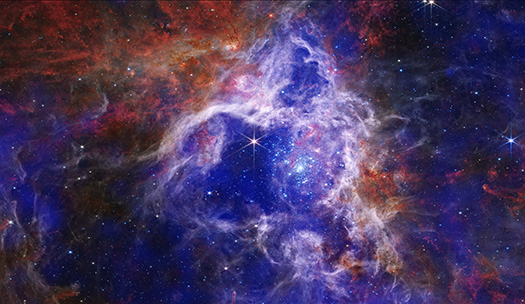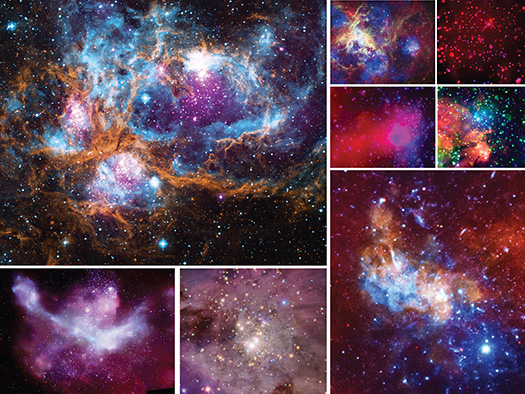The Enduring and Engaging Legacy of Leisa Townsley
When Dr. Leisa Townsley passed away this summer, the scientific community lost a brilliant researcher, teacher, and mentor. She was all of those things, but we wanted to feature some of the pivotal and critical ways that she helped the Chandra X-ray Observatory, specifically our Communications and Public Engagement work.
Chandra was launched into space in 1999 and with the beginning of its successful operations, a new era in high-energy astrophysics was born. For certain deep space objects that emitted enough X-ray photons, Chandra brought, for the first time, the ability to create richly detailed, high-resolution images. These X-ray images, however, were different in many ways from the images of its previously-launched sister Great Observatory, the Hubble Space Telescope.
Establishing a visual identity for Chandra, both on its own and in collaboration with other telescopes that study different kinds of light, including Hubble, was no small challenge. Our Chandra group was responsible for finding the best way to show X-ray data, which often looks completely different from optical data. Would traditional techniques used for visible light data be suitable to process X-ray data? Would new processes and tactics need to be developed to make X-ray data more accessible, easier to understand and process?
Dr. Kimberly Arcand has been with Chandra since before its launch and was involved with developing the visual form or representation that the telescope’s data would eventually take. When tasked with working on Chandra data in the earliest years of the mission, she canvassed both the X-ray astrophysics community and other experts in astronomy. One of her key advisors and supporters was Dr. Leisa Townsley.
“Leisa took the time to sit down with me and help me figure out better processing pipelines to really make those precious X-ray photons from Chandra pop and to showcase the science inside,” said Arcand. “She was so supportive of me as a young woman just starting out in this STEM field and that meant the world to me, especially at that time.”
In addition to her image processing skills, Leisa was always enthusiastic to share her data with the Chandra Press Office in whatever capacity was requested. This was important because not all scientists then understood the value of translating their work into a public friendly form.
“Leisa was always eager to explain her results in ways that someone from any background could understand,” said Chandra Press Officer Megan Watzke. “And her excitement for the science and for sharing it widely was contagious.”
Leisa’s focus with Chandra data involved regions of star formation. These cosmic landscapes often have bright X-ray sources – think specks of bright light – as well as more diffuse X-ray emission like clouds of hot gas. This combination led Leisa’s star-forming regions to become some of Chandra’s most spectacular and popular images. She was the Principal Investigator for 25 Chandra proposals, making her one of the most successful astronomers ever in using this observatory.
“Anytime Leisa came around with new science data, like that on 30 Doradus, Trumpler 14, Orion, W3 or any of these other gorgeous areas of star formation, I knew we’d make something amazing,” said Arcand. “She was a natural leader, a mentor at heart, and just gave very freely of her time, her expertise, and her data. I learned so much from her on how to process our X-ray Universe.”
To honor the public engagement legacy of Leisa Townsley, we are releasing a new composite of Chandra’s X-ray data of 30 Doradus (royal blue and purple) that have been combined with infrared data from NASA’s James Webb Space Telescope (red, orange, green and light blue). It seems fitting to us that Leisa’s data and her research would live on in concert with NASA’s newest space telescope. We expect that current and future researchers will use the data she collected for unforeseen discoveries for years to come, and we will do our best to share these results with the widest possible audiences on her behalf.
Ad Astra, Leisa.

30 Doradus
Credit: X-ray: NASA/CXC/Penn State Univ./L. Townsley et al.; IR: NASA/ESA/CSA/STScI/JWST ERO Production Team

